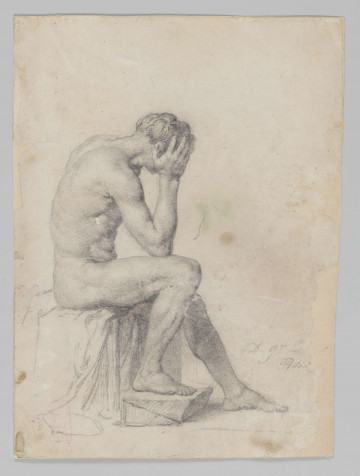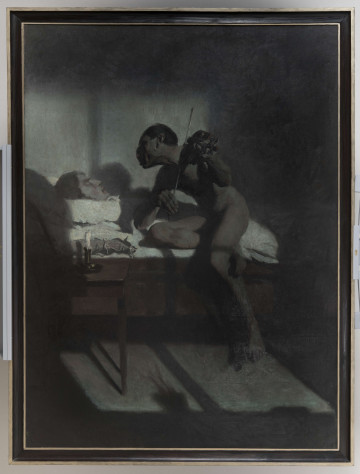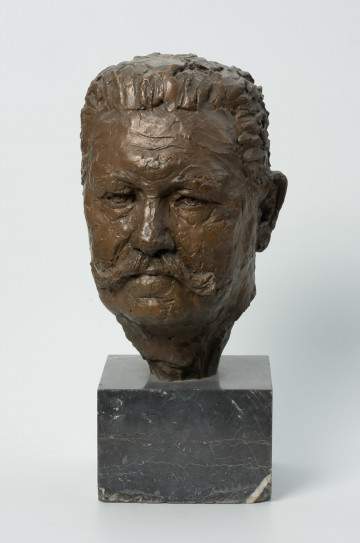
Male nude
National Museum in Lublin
Part of the collection: European classics of modernity
Ernesto de Fiori came from an Austrian family with Piedmontese roots. In 1904, he enrolled in Gabriel von Hackl's class at the Munich Academy of Fine Arts, from where he returned to his native Rome after two semesters. He stayed there until 1908, trying his hand as a painter and establishing contacts with Hermann Haller and Karl Hofer, which were important for his later artistic interests. Between 1909 and 1910, he lived in Munich, and a year later he went to Paris. As a regular at the Café du Dôme, he joined the group of German artists around Henri Matisse. Together with them he became acquainted with the most important collections of contemporary art in Paris, while their circle was acquired by Alfred Flechtheim for his Düsseldorf gallery. Between 1911 and 1914 de Fiori exhibited works at the most important exhibitions in Cologne, Munich, Berlin and Bremen, only to stop his artistic activity for three years with the outbreak of war. After Italy joined the hostilities, he took German citizenship and fought at the front until 1917, after which he went to Switzerland, where he met the Zurich Dadaists. From 1921 Flechtheim was given exclusive rights to represent de Fiori on the art market. Among his most frequent subjects was the male nude: from the limp, Picasso-inspired pink and blue period of Cierpiący [The Suffering] (1911, Kunsthalle Mannheim), through the austere, anatomically simplified Stojący młodzieńca [The Standing Young Man] (1920, National Museum in Gdańsk), to Wielki młodzieniec I [The Great Young Man I] (1926) with its self-portrait features and realistic proportions, for which plaster and clay preparatory models were presented in the first major study of the artist's oeuvre (1926). The latter composition was transposed into permanent material at the request of Walter Riezler, director of the museum in Szczecin, where it remains to this day despite the Nazi purges and the post-war evacuation of the collection. Its pendant (Wielki młodzieniec II [The Great Young Man II], 1929-1930), purchased by the Berlin magistrate to decorate a park in the Schöneberg district, did not survive the Second World War.
Szymon Piotr Kubiak
Author / creator
Dimensions
cały obiekt: height: 229 cm, width: 59 cm
Object type
sculpture
Creation time / dating
Creation / finding place
Identification number
Location / status

National Museum in Lublin

1898
National Museum in Lublin

1928
National Museum in Szczecin
DISCOVER this TOPIC
National Museum in Szczecin
DISCOVER this PATH
Educational path